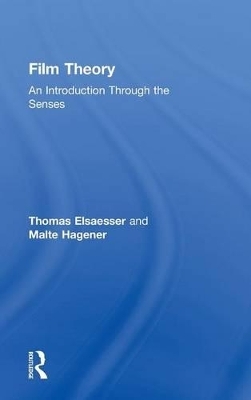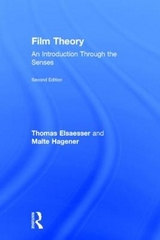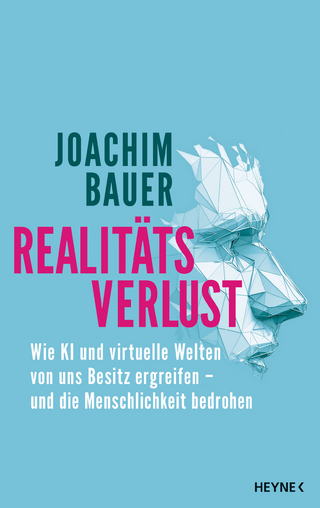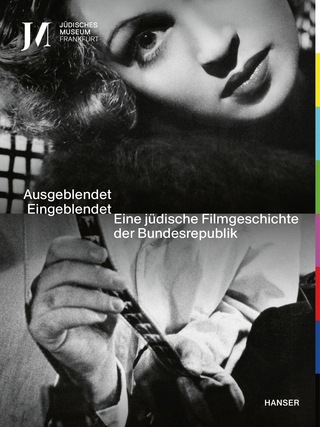
Film Theory
Routledge (Verlag)
978-0-415-80100-3 (ISBN)
- Titel erscheint in neuer Auflage
- Artikel merken
What is the relationship between cinema and spectator? That is the central question for film theory, and renowned film scholars Thomas Elsaesser and Malte Hagener use this question to guide students through all of the major film theories – from the classical period to today – in this insightful, engaging book. Every kind of cinema (and film theory) imagines an ideal spectator, and then imagines a certain relationship between the mind and body of that spectator and the screen. Using seven distinctive configurations of spectator and screen that move progressively from `exterior’ to `interior’ relationships, the authors retrace the most important stages of film theory from 1945 to the present, from neo-realist and modernist theories to psychoanalytic, `apparatus’, phenomenological and cognitivist theories.
Thomas Elsaesser is Professor of Film and Television Studies in the Department of Art and Culture at the University of Amsterdam. A renowned film scholar, he is the author and editor of many books, including Weimar Cinema and After, also published by Routledge. Malte Hagener is Associate Professor of media studies at the Leuphana Universität Lüneburg. He has written Moving Forward, Looking Back: The European Avant-garde and the Invention of Film Culture, 1919-1939 and edited many volumes, including Cinephilia: Movies, Love, and Memory.
Introduction: film theory, cinema, the body and the senses 1. Cinema as window and frame REAR WINDOW - Constructivism - Realism - Open and closed film forms (Leo Braudy) - Classical cinema - Central perspective - Rudolf Arnheim - Sergej Eisenstein - Andre Bazin - David Bordwell - Cinema as shop- window and display 2. Cinema as door - screen and threshold THE SEARCHERS - Entry into the film - Etymology of screen - Thresholds of the cinema/movie theater - Beginnings: credits and credit sequences - Neoformalism (Bordwell/Thompson) - Post- structuralism (Thierry Kuntzel) - Michail Bachtin - Door/screen as filmic motif in Buster Keaton and Woody Allen 3. Cinema as mirror and face PERSONA- Bela Balazs - The close- up - The face - Face as mirror of the unconscious - Christian Metz - Jean- Louis Baudry - Apparatus- theory - Early cinema and the close- up (Tom Gunning) - Reflexive doubling in modern (art) cinema - Mirror neurons - Paradoxes of the mirror 4. Cinema as eye - look and gaze BLADE RUNNER - Active and passive eye - The mobile eye of early cinema - Dziga Vertov - Apparatus- theory - Suture - Continuity- editing - Laura Mulvey - Feminist film theories - THE SILENCE OF THE LAMBS - Historicity of modes of perception - Regimes of the gaze - The big Other (Jacques Lacan) - Slavoj Zizek - The panoptic gaze (Michel Foucault) - Niklas Luhmann and selfmonitoring 5. Cinema as skin and touch CRASH - Critique of "ocularcentrism" - Skin and identity - THE NEW WORLD- Vivian Sobchack - Phenomenology - The (re-)turn to the body -Avant- garde practices - Body and genre (Linda Williams, Barbara Creed) -The skin of film (Laura Marks) - Accented cinema (Hamid Naficy) -Siegfried Kracauer 6. Cinema as ear - acoustics and space SINGIN' IN THE RAIN - Sound as spatial phenomenon - Silent cinema and the introduction of sound - Sound in classical cinema -- The acousmetre (Michel Chion) - Reversals in the hierarchy of image and sound - Surround- systems - Materiality and plasticity of sound 7. Cinema as brain - mind and body ETERNAL SUNSHINE OF THE SPOTLESS MIND- Propaganda and cult films - Five concepts for connecting mind and cinema - Gilles Deleuze - Annette Michelson - Torben Grodal - Mind- game films - Mind and body, spectator and film - Cognitivism - Phenomenology - Empathy - Embodiment and disembodied vision Conclusion: digital cinema - the body and the senses refigured? TOY STORY - Animation and (photo-)graphics - The future of projection - Screens: bigger and smaller - The new body norm: face or hand? - Productive contradictions: digital cinema, virtual reality, media convergence - Interface and portal instead of window, door and screen - MONSTERS INC. and doors - Public and private - Mobility and hybridity - Film theory and philosophy: radical reformulations or rescue missions?
| Erscheint lt. Verlag | 18.1.2010 |
|---|---|
| Zusatzinfo | 40 Halftones, black and white |
| Verlagsort | London |
| Sprache | englisch |
| Maße | 152 x 229 mm |
| Gewicht | 408 g |
| Themenwelt | Kunst / Musik / Theater ► Film / TV |
| Sozialwissenschaften ► Kommunikation / Medien ► Medienwissenschaft | |
| ISBN-10 | 0-415-80100-1 / 0415801001 |
| ISBN-13 | 978-0-415-80100-3 / 9780415801003 |
| Zustand | Neuware |
| Haben Sie eine Frage zum Produkt? |
aus dem Bereich



